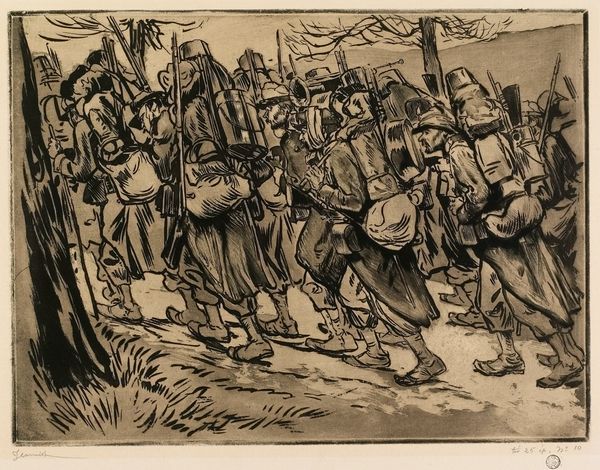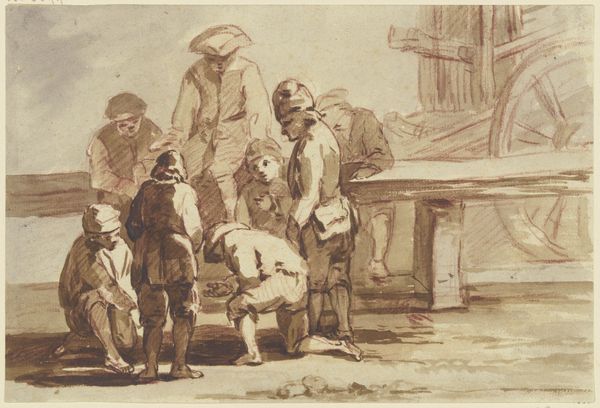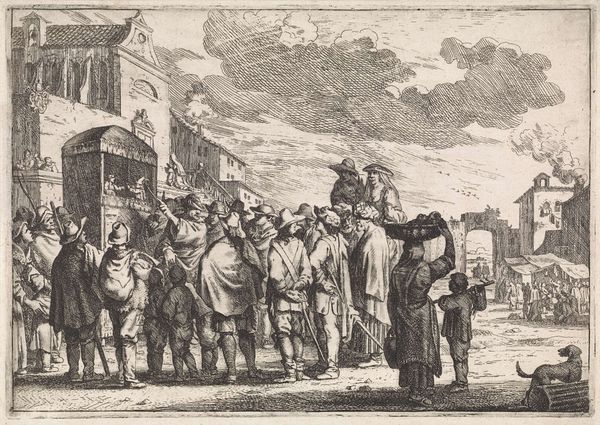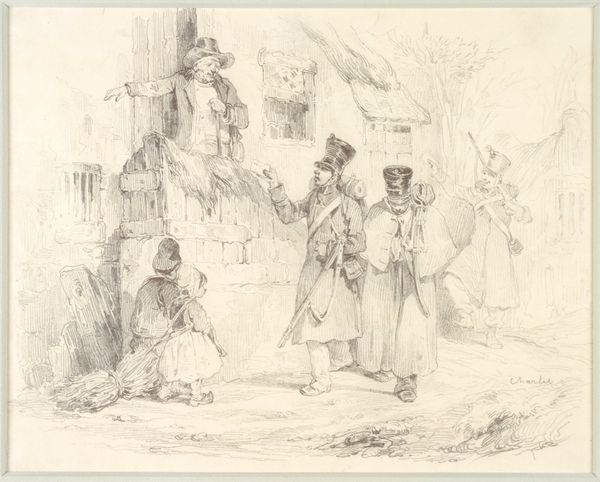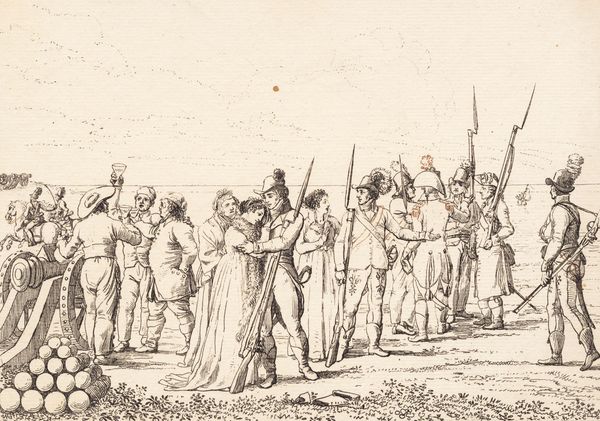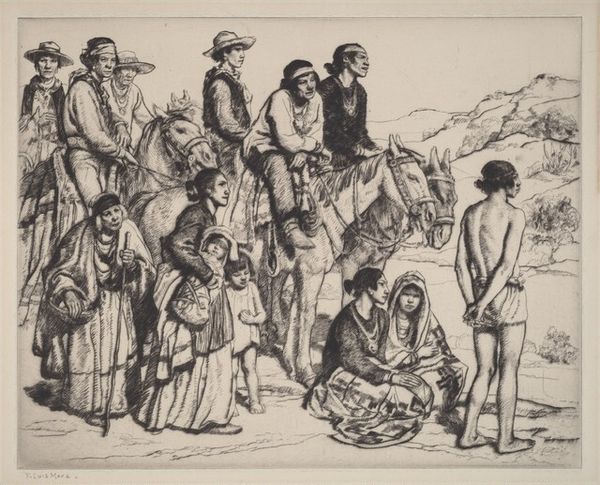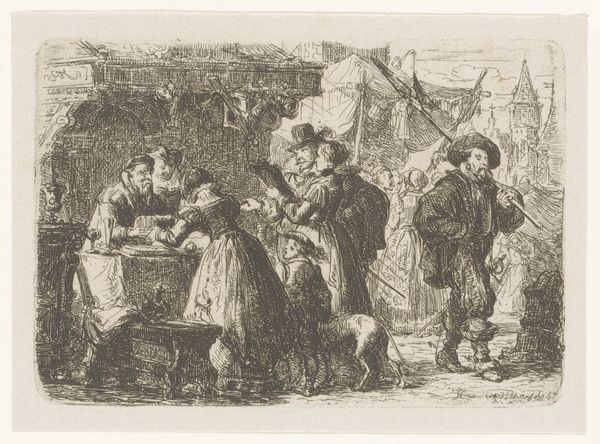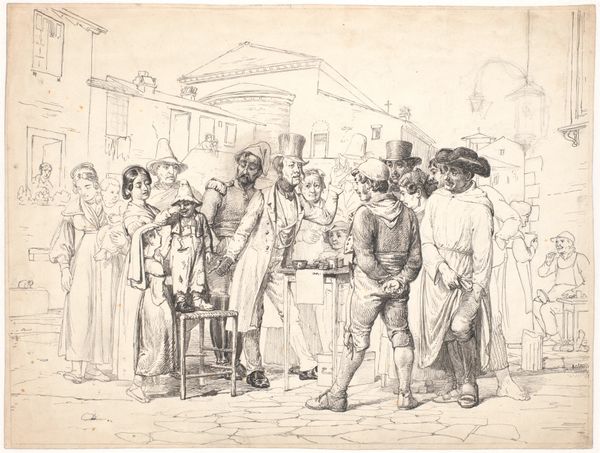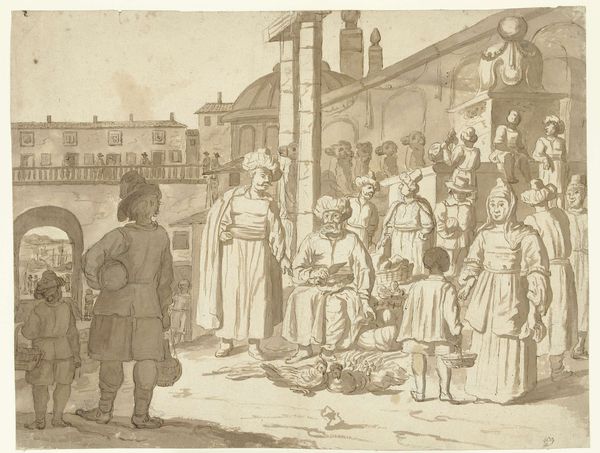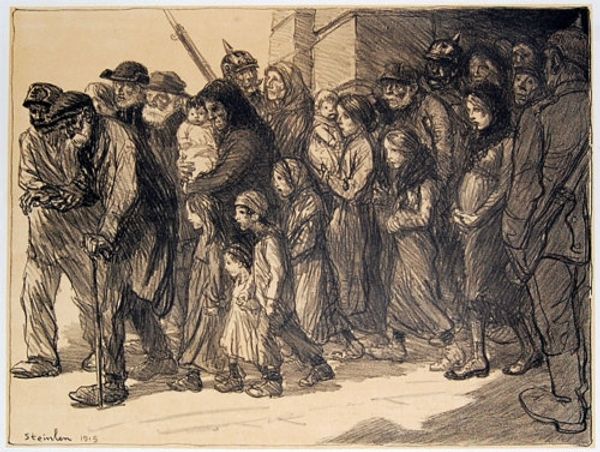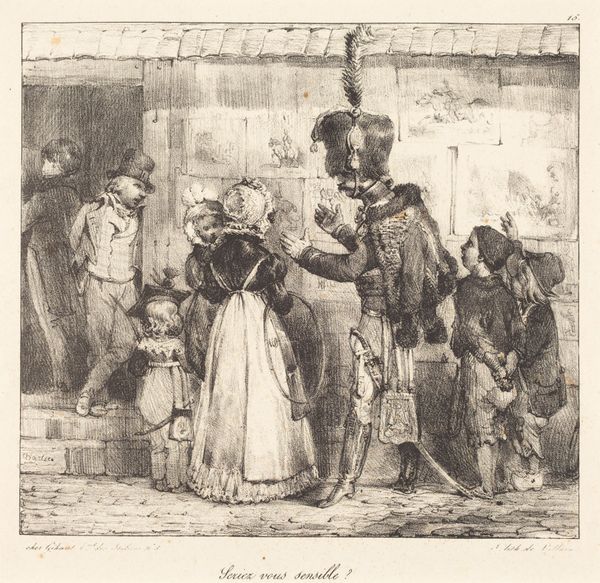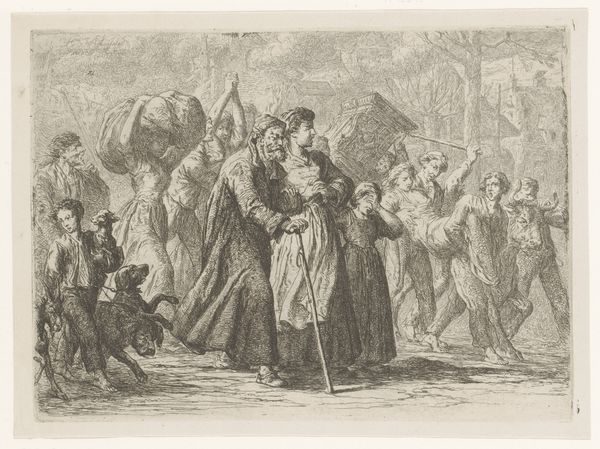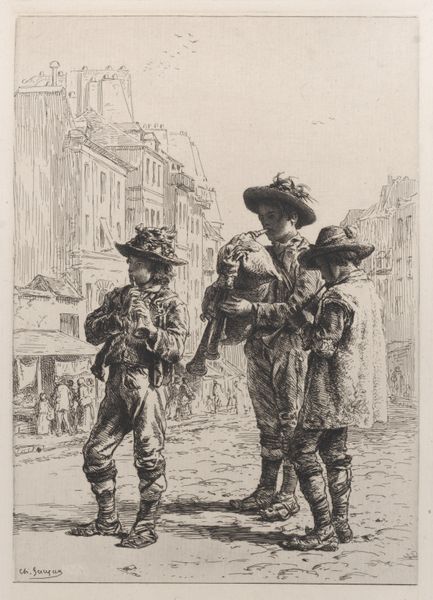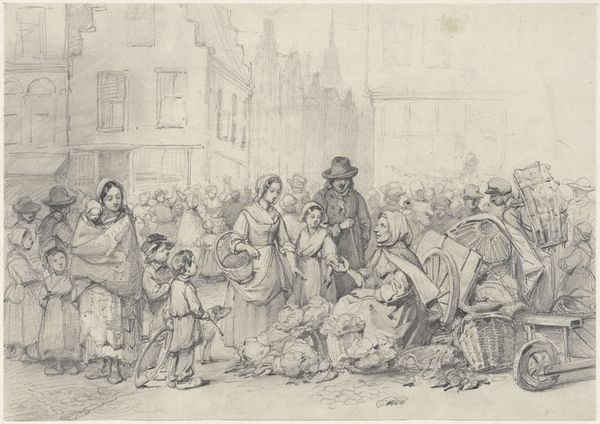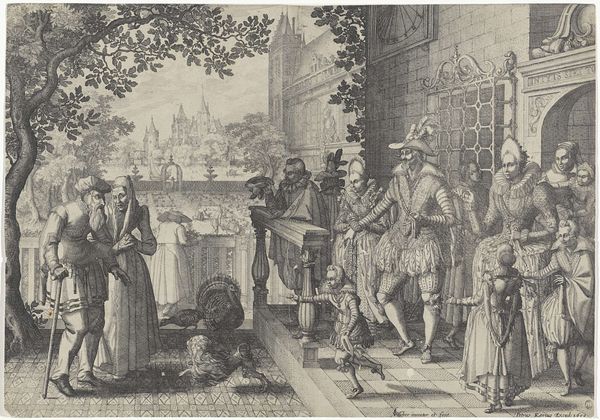
watercolor
#
portrait
#
figurative
#
16_19th-century
#
oil painting
#
watercolor
#
orientalism
#
genre-painting
#
watercolor
Copyright: Public Domain: Artvee
Curator: Editor: So, here we have Vasily Vereshchagin's watercolor from 1870, "Chorus of dervishes begging for alms. Tashkent". I am immediately struck by the almost photographic realism of the figures, especially the details of their clothing and the textures of the buildings. It feels like a street scene captured in time. How do you read this work? Curator: It's fascinating how Vereshchagin, trained in a European academic tradition, portrays this subject matter. But let’s consider the materials – watercolor, typically associated with sketches or preliminary studies. Its portability allowed him to capture this scene directly, almost as an ethnographer. How does this choice of material and its accessibility challenge traditional notions of ‘high’ art in relation to its subject? Editor: That’s an interesting perspective. I was mostly thinking about the cultural depiction within it, the subject of orientalism itself and the setting, the faces, clothes and even poses seem… otherized. But when we think about accessibility, the material shifts things into a very different framing. Curator: Precisely. This is more than just observing a different culture; it's about the means of representation. Watercolors were often used for documentary purposes or as personal mementos. The artist seems to embed a comment on Western engagement, looking East not from an elite and detached standpoint, but at face level, as a member of the broader material conditions that enable representation itself. What is the role of production? Was it a mere product to serve its patron or the art market? Editor: That makes me think differently about the entire composition! It shifts the emphasis away from the exotic "other" and towards the processes and materials that facilitated its creation and dissemination. Curator: Exactly. It’s about revealing the material relationships between the artist, the subject, and the potential audience. Vereshchagin, through his artistic practice and choice of materials, subtly unveils a commentary on cross-cultural exchange and the labor involved in representation itself. Editor: Thanks for this perspective! I had tunnel-visioned on orientalism but this gives a different context. Curator: I agree.
Comments
No comments
Be the first to comment and join the conversation on the ultimate creative platform.
